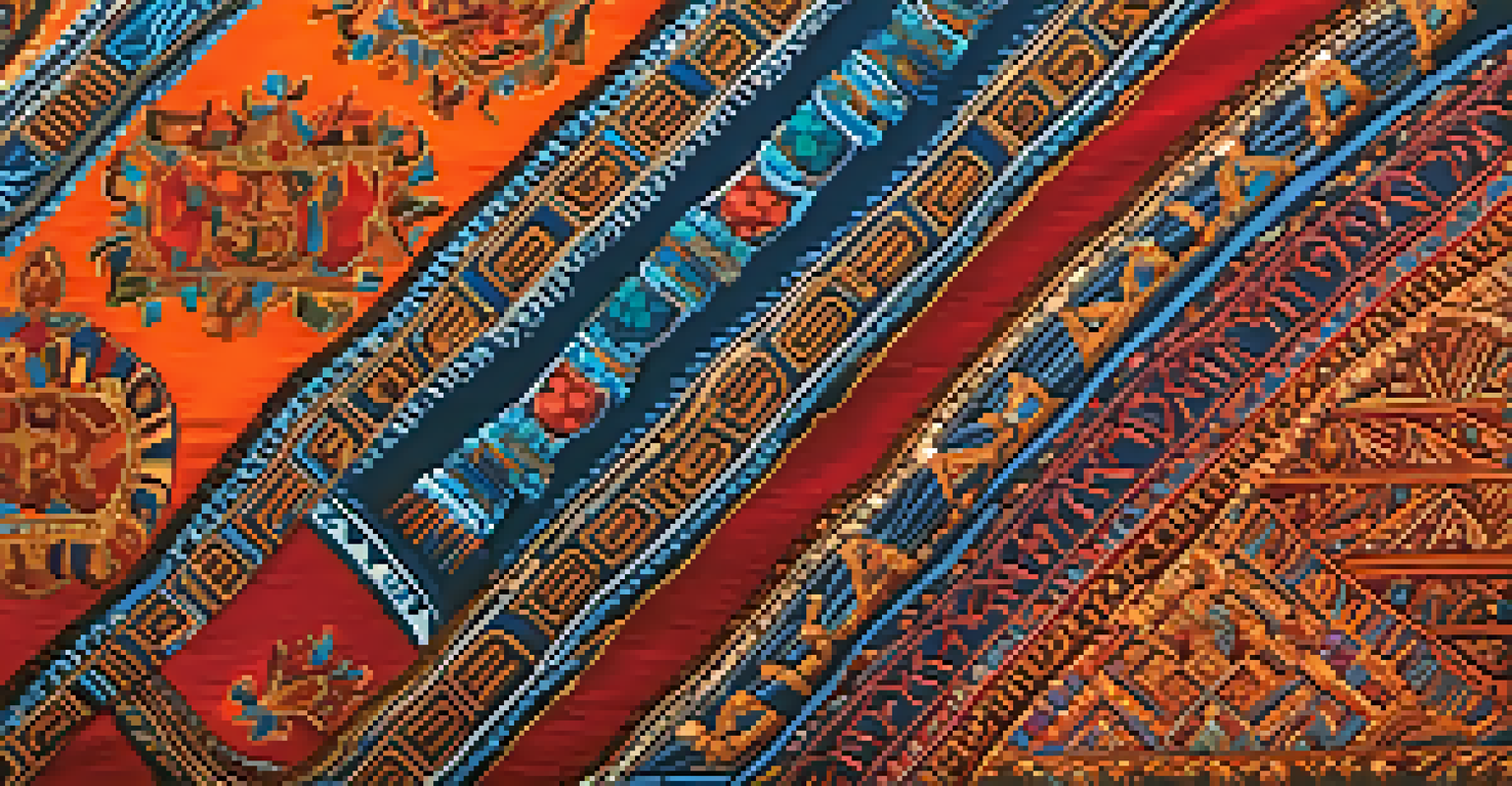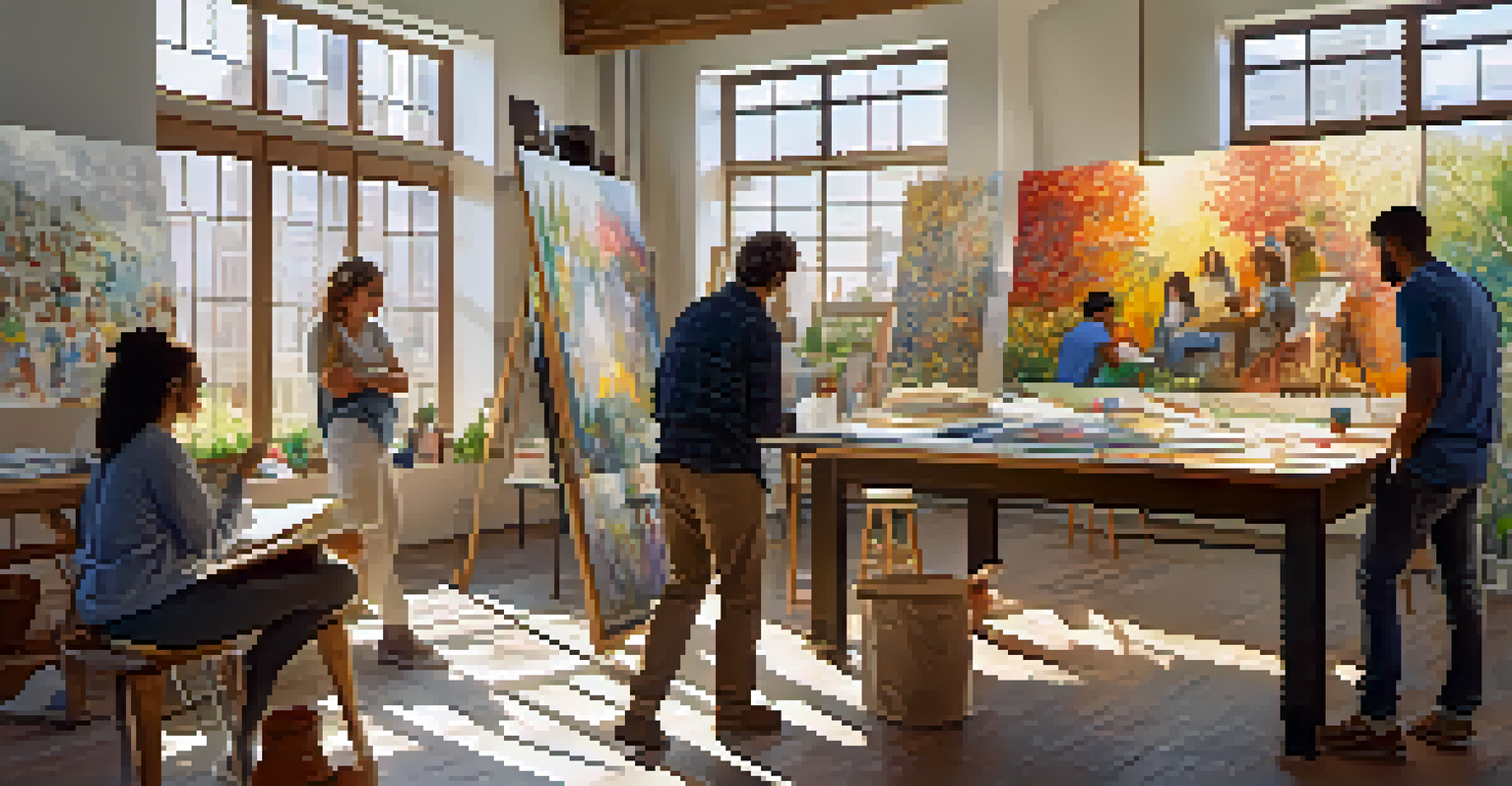Cultural Appropriation in Art: Ethical Considerations

Understanding Cultural Appropriation in Art
Cultural appropriation in art refers to the practice of taking or borrowing elements from one culture by artists from another. This can include styles, symbols, and even traditional practices. While art is often about blending influences, the line between appreciation and appropriation can be quite thin.
Cultural appropriation is not a simple matter of borrowing; it is a complex issue that involves power dynamics and historical context.
When artists draw from different cultures, it’s essential to consider the context. For instance, using indigenous patterns in fashion can be seen as an homage or as exploitation, depending on how it’s approached. Understanding this distinction is crucial for artists and audiences alike.
The conversation around cultural appropriation is not just about art; it’s about power dynamics. Who gets to define what is borrowed and what is truly appreciated? This question is at the heart of many debates surrounding this topic.
The Impact of Cultural Appropriation on Communities
Cultural appropriation can have significant repercussions on the communities being referenced. When art is created without understanding or respect for the source culture, it can lead to misrepresentation. This misrepresentation can perpetuate stereotypes and contribute to the erasure of the original culture's significance.

For example, when commercial products use sacred symbols from a culture without any context, it can trivialize deeply held beliefs and traditions. This commodification often leaves the original creators without recognition or compensation, raising ethical concerns.
Cultural Appropriation vs. Appreciation
The distinction between cultural appropriation and appreciation lies in intent and respect for the source culture.
Moreover, the emotional impact on communities can be profound. When individuals see their culture reduced to a trend or aesthetic, it can feel like a dismissal of their heritage and experiences. Recognizing this emotional layer is vital in discussions about appropriation.
Key Differences: Appropriation vs. Appreciation
At its core, the distinction between appropriation and appreciation lies in intent and respect. Appreciation involves a genuine engagement with another culture, often rooted in understanding and collaboration. Appropriation, on the other hand, can come across as superficial or exploitative.
The greatest art is a reflection of the world it comes from, and it requires a respectful engagement with that world.
Consider an artist who collaborates with a cultural group to create work that reflects their stories: this is appreciation. In contrast, an artist who uses elements of that culture without dialogue or consent may be appropriating. This distinction is crucial for fostering respectful artistic practices.
To appreciate a culture authentically, it’s important to immerse oneself in learning, engage with community members, and acknowledge the origins of the art. This approach not only honors the culture but also enriches the artist's work.
Ethical Considerations for Artists
For artists, navigating the ethical landscape of cultural appropriation requires careful consideration and self-reflection. Questions to ask include: Am I honoring the culture I’m referencing? Have I consulted with those from that culture? These inquiries can guide artists toward a more respectful approach.
Additionally, artists should consider the historical context of the elements they wish to incorporate. Understanding the significance behind symbols, patterns, or practices can help them avoid unintentional harm. This background knowledge can lead to more meaningful and respectful artistic expression.
Impact on Communities Matters
Cultural appropriation can lead to misrepresentation and emotional harm for the communities involved.
Lastly, accountability is key. Artists must be willing to listen to the voices of the communities they engage with, taking feedback seriously and being open to critique. This practice fosters a more inclusive and ethical art world.
Case Studies: Appropriation in Contemporary Art
Several high-profile cases have sparked discussions about cultural appropriation in contemporary art. For instance, when a well-known artist uses traditional motifs from a marginalized culture, it often leads to backlash. These instances highlight the importance of understanding the cultural significance behind the art.
In contrast, some artists have successfully collaborated with cultural communities to create work that resonates authentically. These collaborations often celebrate the culture while providing recognition and compensation to the original creators, setting a positive precedent.
Examining both the appropriative and appreciative approaches in these case studies sheds light on the broader implications of cultural borrowing. It emphasizes the necessity of dialogue and respect in the creative process.
The Role of Education in Preventing Appropriation
Education plays a vital role in addressing cultural appropriation in art. By fostering awareness of different cultures, artists and audiences can better understand the implications of their work. Educational programs can provide insights into the histories and traditions that inform various artistic practices.
Workshops and seminars focusing on cultural sensitivity can equip artists with the tools they need to create responsibly. These resources can help demystify the cultures they wish to engage with, promoting an environment of respect and collaboration.
Education is Key for Artists
Educating artists on cultural sensitivity helps promote responsible and respectful artistic practices.
Furthermore, art institutions and galleries can take proactive steps by highlighting diverse voices and narratives. This approach not only enriches the art community but also encourages artists to engage with cultures in a more informed manner.
Moving Forward: Fostering Respectful Artistic Practices
As the conversation around cultural appropriation continues to evolve, fostering respectful artistic practices is essential. This means encouraging artists to engage deeply with the cultures they draw inspiration from and to consider the implications of their work.
Building relationships with cultural communities can lead to richer, more authentic art. By collaborating and sharing spaces, artists can create work that honors the source culture while also contributing to their own artistic journey.

Ultimately, the goal should be to create a more inclusive art world where all voices are heard and respected. By prioritizing understanding and collaboration, artists can navigate the complexities of cultural borrowing ethically and thoughtfully.